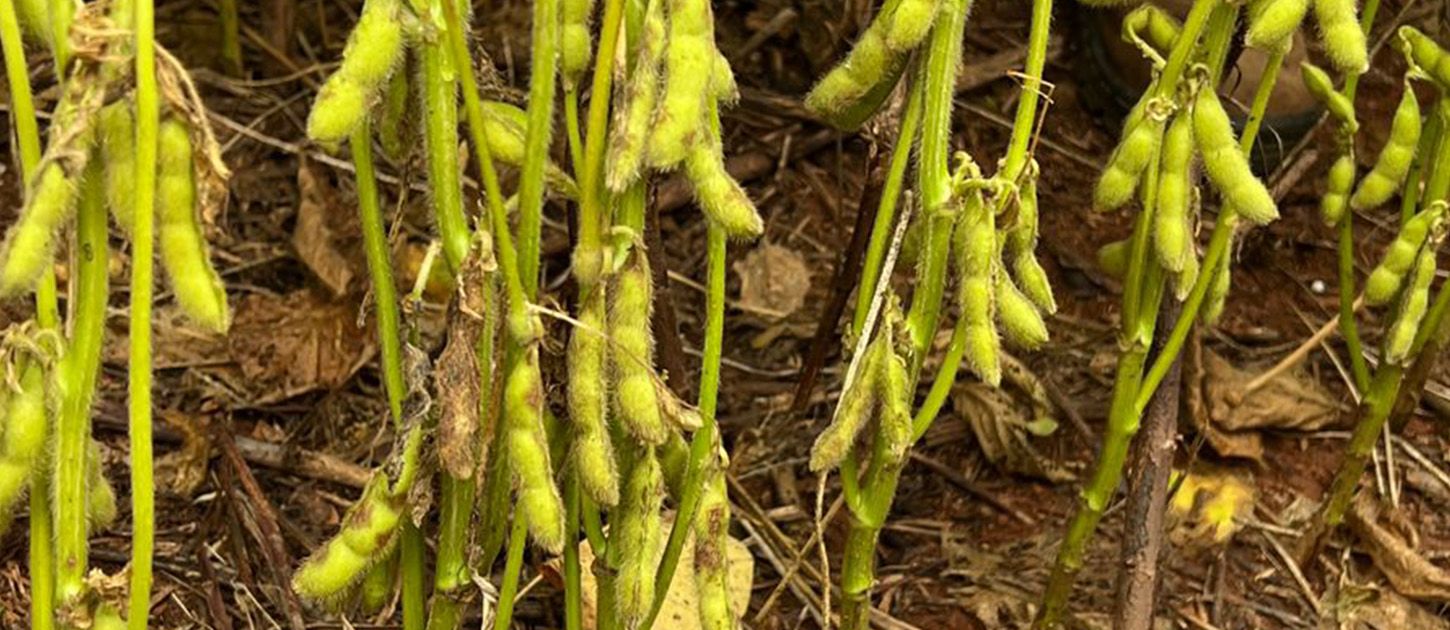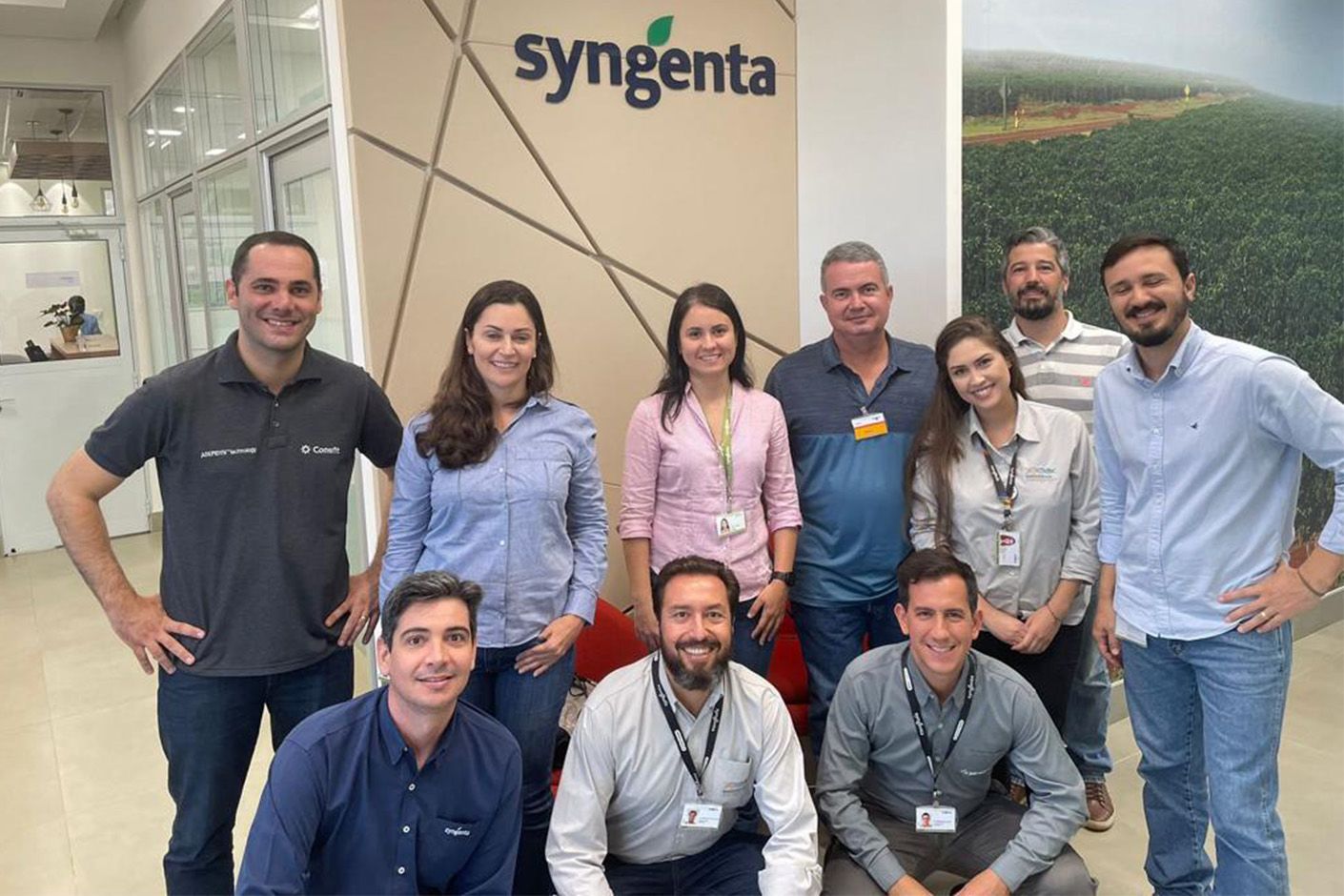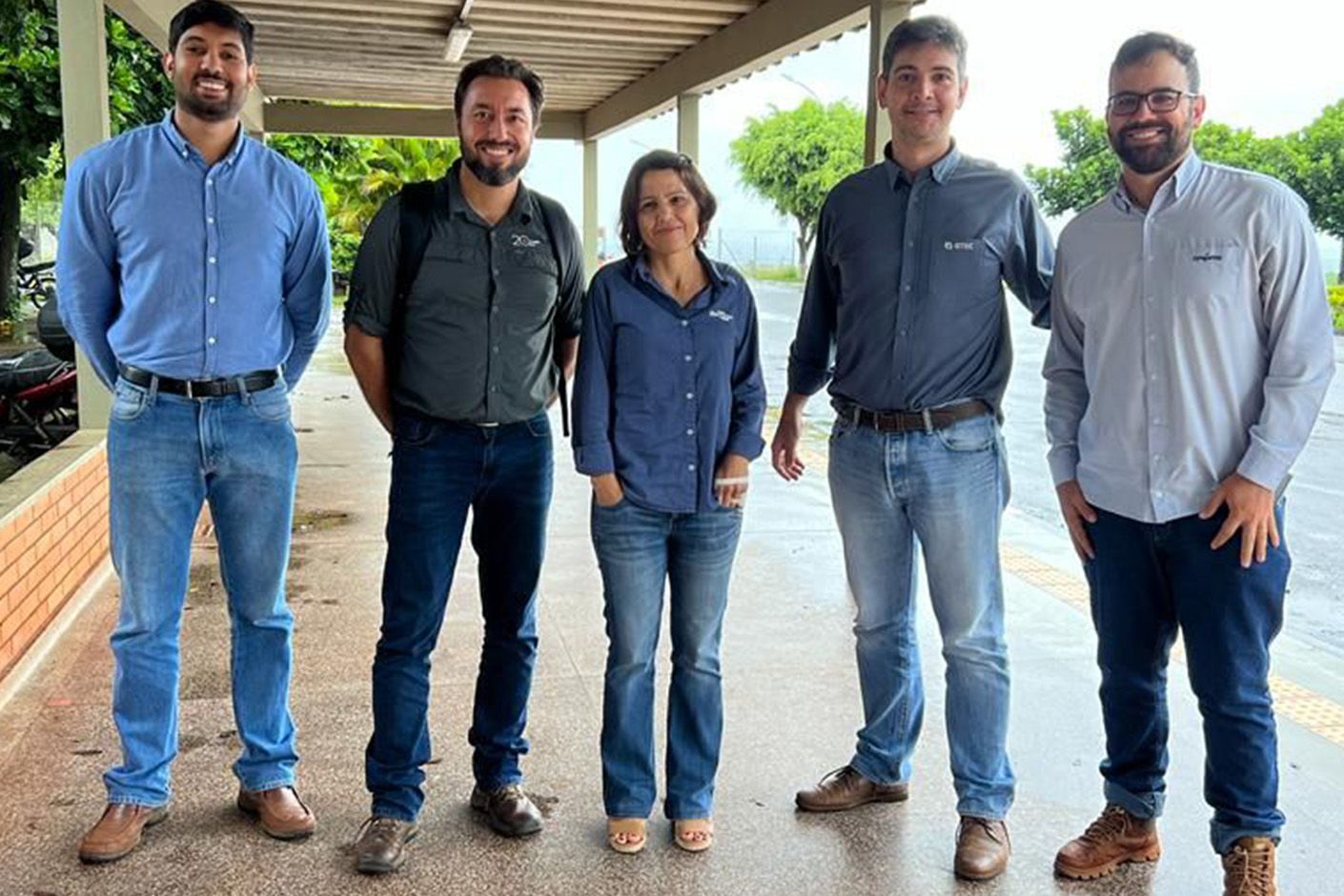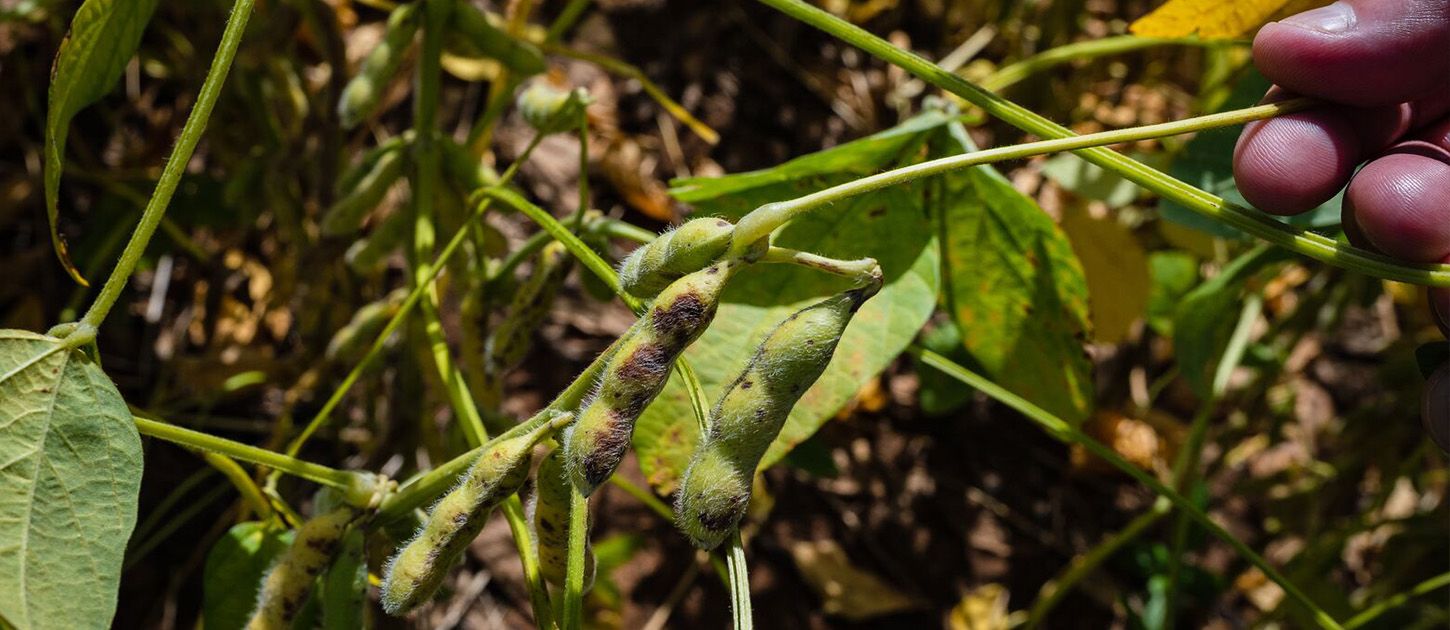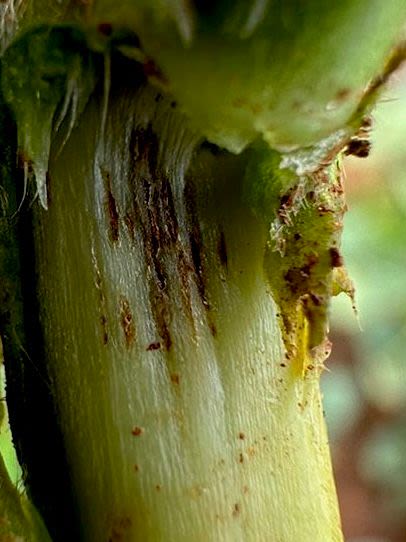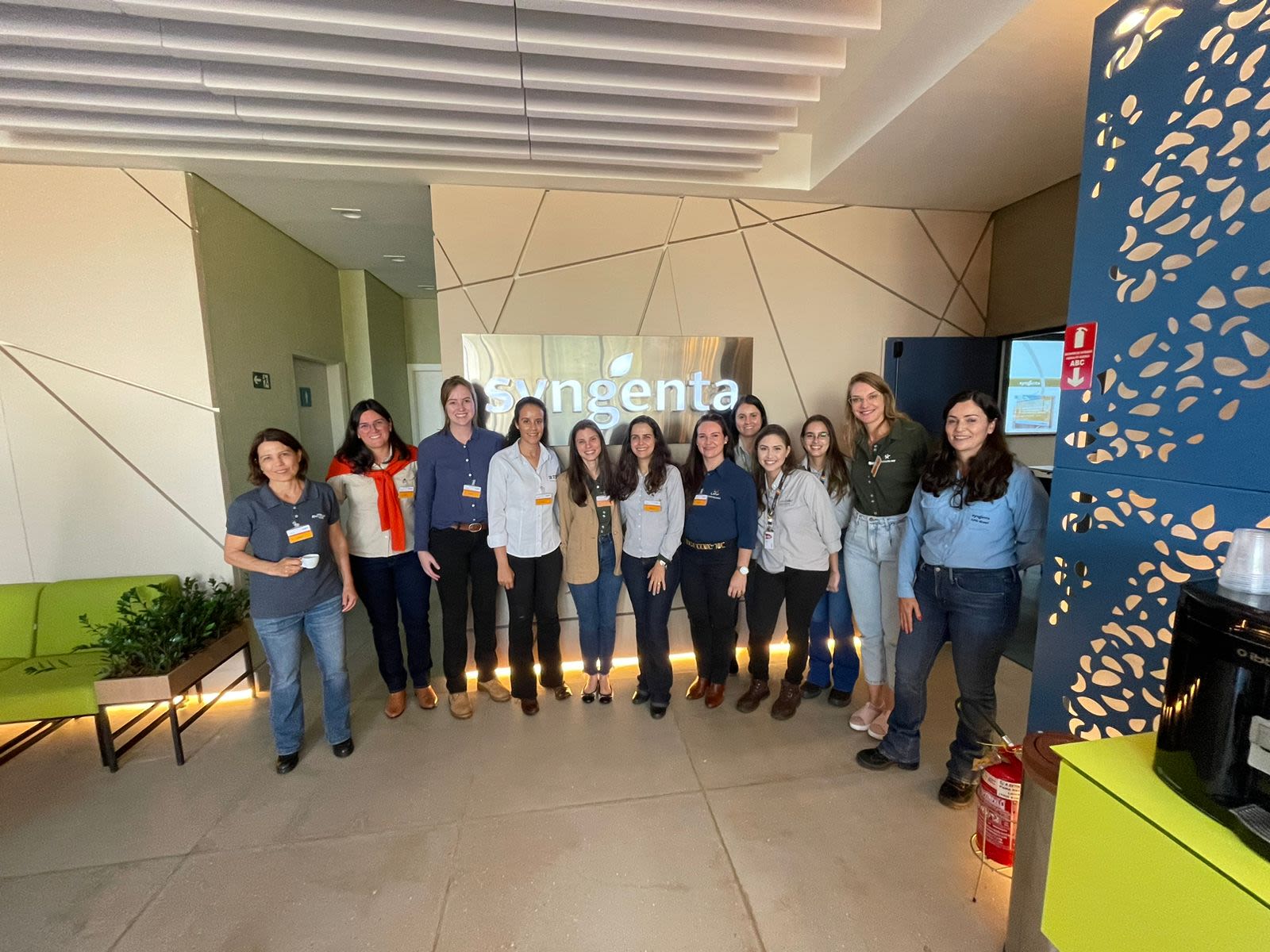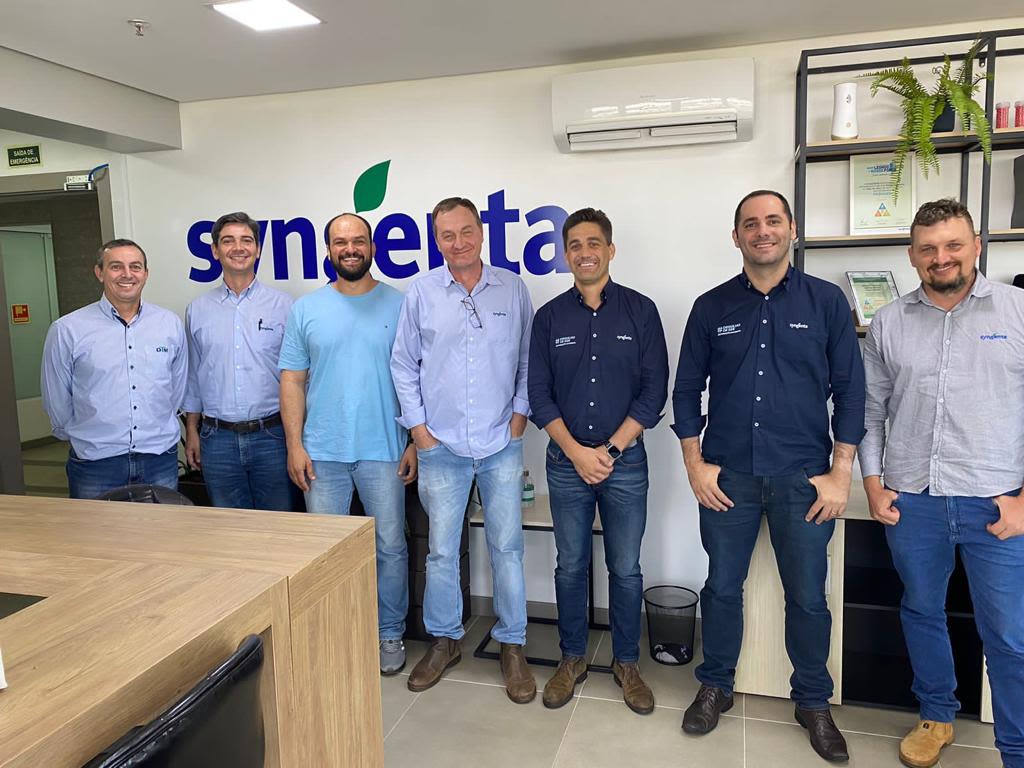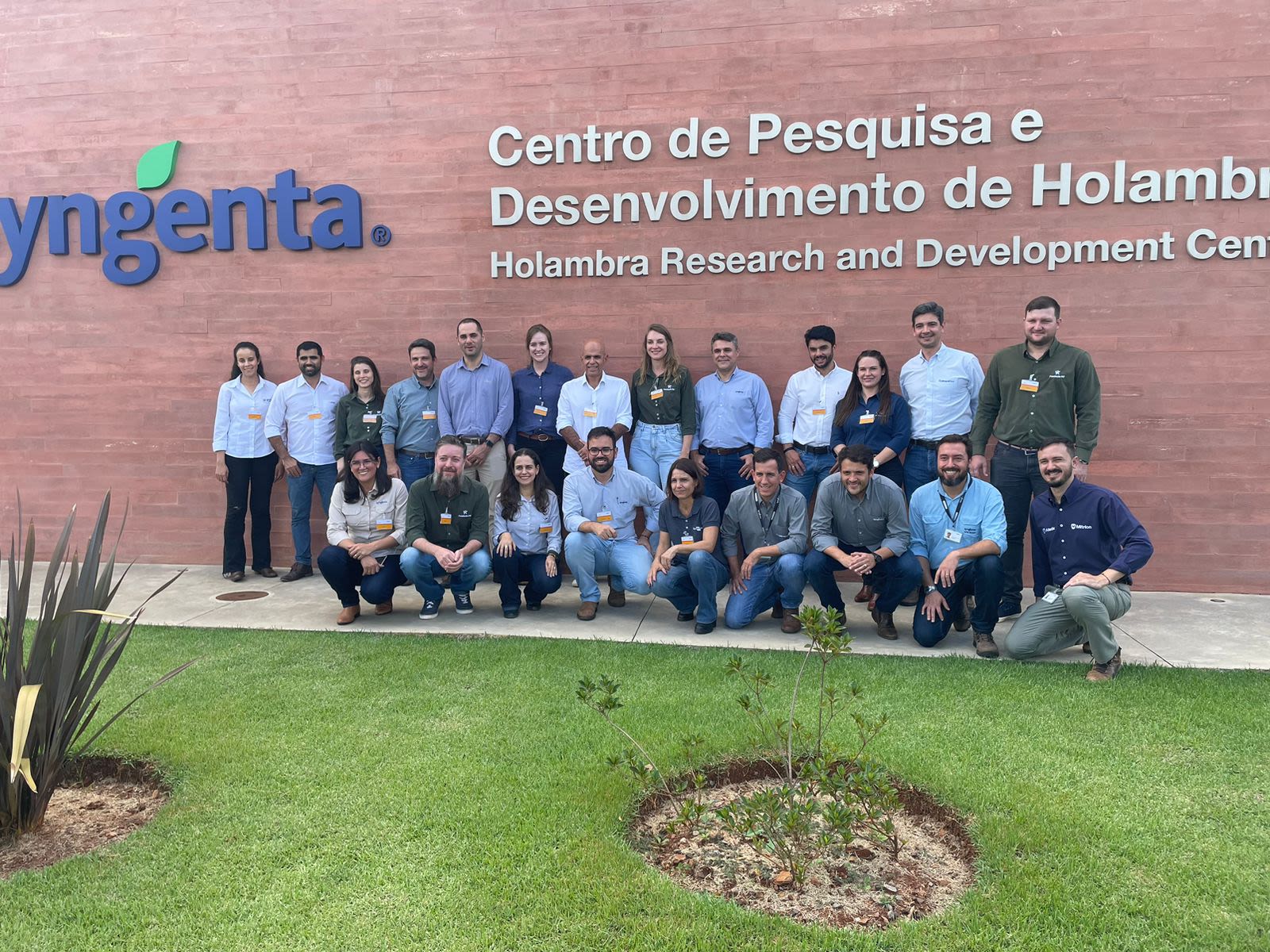A race against time
Saving soybeans with innovative science.
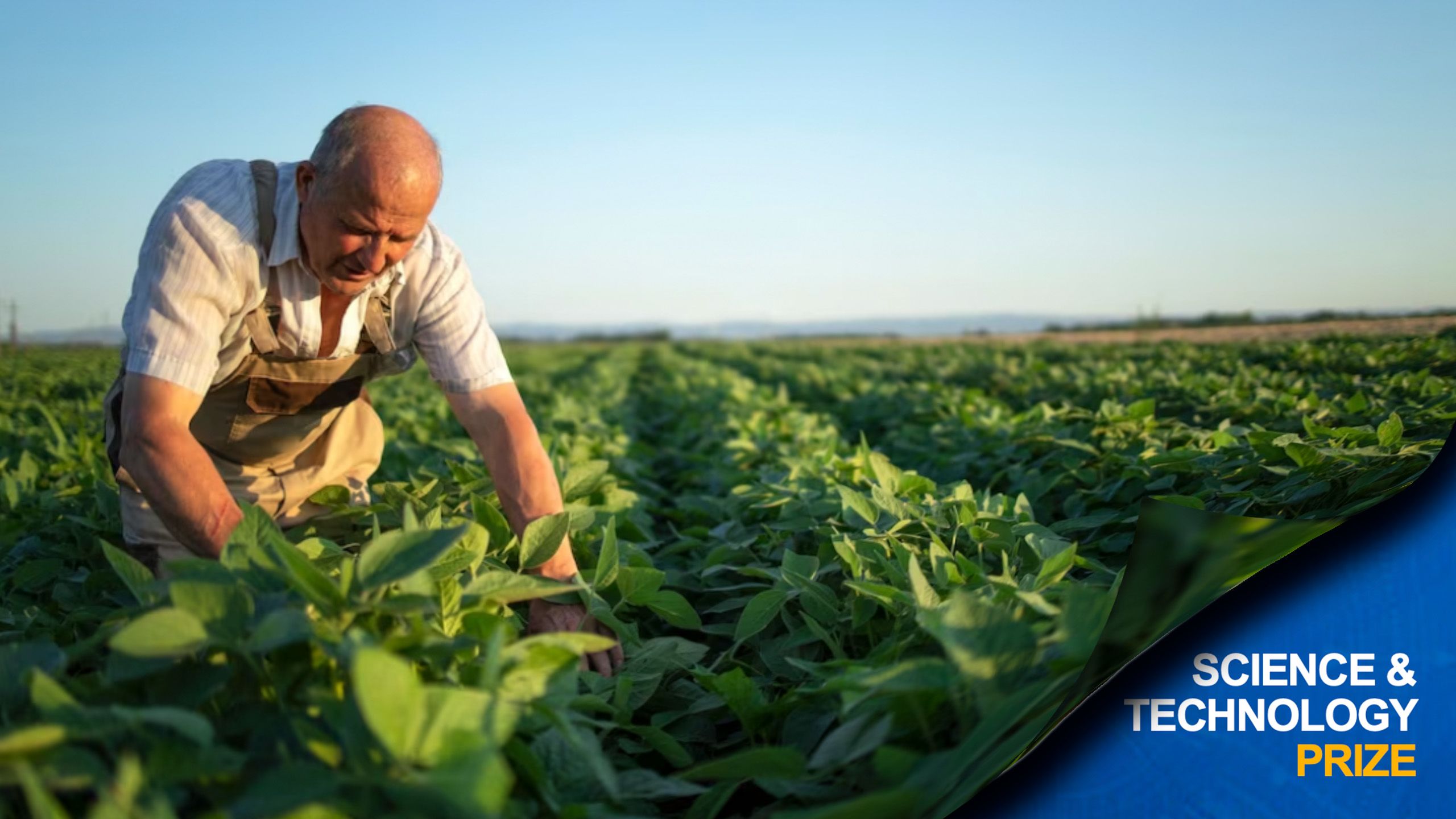
During the 2021/2022 soybean season in Brazil, farmers faced a nightmare scenario.
Despite their best efforts, they watched helplessly as pods split and seeds decayed on growing crops. Losses were colossal, particularly in the country’s agricultural heartland of Mato Grosso, where nearly half the entire crop was destroyed.
A strange new anomaly was sweeping the country’s vast soy fields, leaving farmers and experts baffled. With Brazil being the world’s leading soy producer, the stakes were enormous.
Understanding and controlling this new threat became a race against time.
Soybean pod damage.
Soybean pod damage.
Enter a team of Syngenta researchers, who rose to the challenge, leading the way in identifying and understanding the anomaly by pinpointing the pathogens that caused it.
They had just one season to identify the pathogen and develop efficient treatments. Their approach combined rapid response, interdisciplinary collaboration, and cutting-edge technology.
The team's extraordinary efforts paid off. In just six months, they achieved what typically takes years of interdisciplinary research. Their achievement earned them the prestigious Syngenta Science and Technology Prize for breakthrough innovative research at a critical pace.
What is the Syngenta Science & Technology Prize?
Syngenta recognizes our scientists' achievements and celebrates the breakthroughs that emerge from their work through the Science and Technology (S&T) Prize. Investing in exceptional talent and celebrating innovation is one of the reasons we are known as a top five science employer.
The award-winning team was made up of Ricardo Desjardins, Flavia Mello, Sandra Mathioni, Regis Stacke, Federico Villasanti, and Douglas B. Marques, bringing together years of experience in Brazilian agriculture and combating fungal threats to soybeans.
“There were several theories floating around,” says Marques, “people thought it could be pest damage or a weather event. All the while, growers were panicking about their losses!”
Marques helped lead the taskforce to connect colleagues across disciplines and ensure a rapid response. “We didn’t have a specific plan, but our research teams in Brazil are well connected with our farmers. That connection, coupled with our scientific and technical expertise, was key to our success.”
At the same time, Desjardins reviewed the initial scientific research on the problem and contacted specialists in Colombia and the USA for insights on probable causes.
The team needed to understand just how serious the problem was – and in a country that grows as much soybean as Brazil, this is a colossal logistical challenge.
If you want to understand how a disease is operating, you need a robust method to capture data and then analyze that data to see patterns. Federico Villasanti, a Digital Specialist, collaborated with Syngenta’s computer vision teams to develop an innovative machine-learning model. “Machines can detect patterns much better than we can,” he says. Using this model massively sped up the whole process.
But, even if you can track a disease, to treat it, you need to know what you are up against.
Members of the winning team at Syngenta’s Holambra facility in Brazil. Back (left-right): Bruno Zuntini - MKT Fungicide leader, Sandra Mathioni – winner, CPD Molecular Biology Specialist Research, Flavia Mello – winner, CPD Fungicides Research, Juliano Diniz - External Consultant of Mato Grosso, Victoria Mattos - CPD trialist of Fungicide, Thales Barreto - MKT Fungicide Asset and Dhiego Duvaresch - MKT Fungicide Asset (MKT Team). Front (left-right): Douglas Marques – winner, LATAM CPD Fungicides Manager, Ricardo Desjardins – winner, Senior Marketing Manager, Caio Prates - CPD fungicide lead.
Members of the winning team at Syngenta’s Holambra facility in Brazil. Back (left-right): Bruno Zuntini - MKT Fungicide leader, Sandra Mathioni – winner, CPD Molecular Biology Specialist Research, Flavia Mello – winner, CPD Fungicides Research, Juliano Diniz - External Consultant of Mato Grosso, Victoria Mattos - CPD trialist of Fungicide, Thales Barreto - MKT Fungicide Asset and Dhiego Duvaresch - MKT Fungicide Asset (MKT Team). Front (left-right): Douglas Marques – winner, LATAM CPD Fungicides Manager, Ricardo Desjardins – winner, Senior Marketing Manager, Caio Prates - CPD fungicide lead.
Visit to soy cultivation site at Embrapa Soybean. Left to right: Lucielcio Oliveira - CPD Fungicide Coordinator, Ricardo Desjardins – winner, Senior Marketing Manager, Claudia Godoy - Phytopathologist influencer in soya at Embrapa Soybean, Douglas Marques – winner, LATAM CPD Fungicides Manager, Matheus Parenti – Syngenta Technical Support.
Visit to soy cultivation site at Embrapa Soybean. Left to right: Lucielcio Oliveira - CPD Fungicide Coordinator, Ricardo Desjardins – winner, Senior Marketing Manager, Claudia Godoy - Phytopathologist influencer in soya at Embrapa Soybean, Douglas Marques – winner, LATAM CPD Fungicides Manager, Matheus Parenti – Syngenta Technical Support.
By March 2022, just two months after taking the first samples, the team isolated the culprits: Colletotrichum and Diaporthe – both fungal diseases.
Soybean pod damage.
Soybean pod damage.
Flávia Mello, Fungicide Researcher, Resistance Management, says, “It was challenging to find and isolate the Diaporthe, cultivate it in the lab, and analyze the species responsible.”
By September of 2022, the results were released to the wider scientific community. The team followed this up with field trials in the hardest-hit regions of the country, with results showing that Syngenta’s SOLATENOL® technology showed great efficacy in curbing and controlling these dangerous fungal threats.
As Marques explains: “We used molecular analysis in the lab to confirm the species. We were also testing active ingredients using EC50 or half maximal effective concentration. This is a specific methodology that allows us to measure how much of an active ingredient we needed to use to get a positive result.”
After the lab work, the team moved to field trials to validate and test out the promising results they had found.
The team's vigilance continued into the next season when new symptoms appeared, causing stems to snap before harvest. A massive stem and pod sampling campaign quickly identified Diaporthe ueckeri as the cause, further validating the importance of Syngenta's fungicides in managing this dangerous fungal disease.
Soybean stem snap caused by Diaporthe ueckeri.
Soybean stem snap caused by Diaporthe ueckeri.
Sandra Mathioni, a molecular biologist who worked on the project, attributes their quick response – and beating competitors in the race – to preparedness.
“We had a good structure, the right equipment, good communication between the teams and highly skilled people in the lab. That was what we needed to succeed,” says Mathioni.
For Marques, the award represents more than just recognition of their work. “It was a great pleasure to be recognized for the achievements of Brazilian science. It was the first time that a team from Brazil won Syngenta’s Science & Technology Prize, and our journey will be part of Syngenta's history forever. The challenge to control this anomaly has been immense, but with innovative science – and the right people – you can achieve amazing things.”
This rapid response not only showcased Syngenta's research prowess but also highlighted the company's commitment to addressing urgent agricultural challenges.
The team's work promises to safeguard future soybean crops in Brazil and potentially in other soy-producing regions worldwide, demonstrating how swift action and scientific innovation can make a crucial difference in the face of agricultural crises.
Experts from across the Syngenta business worked on the soybean anomaly project.
Experts from across the Syngenta business worked on the soybean anomaly project.
Experts from across the Syngenta business worked on the soybean anomaly project.
Experts from across the Syngenta business worked on the soybean anomaly project.
Experts from across the Syngenta business worked on the soybean anomaly project.
Experts from across the Syngenta business worked on the soybean anomaly project.


